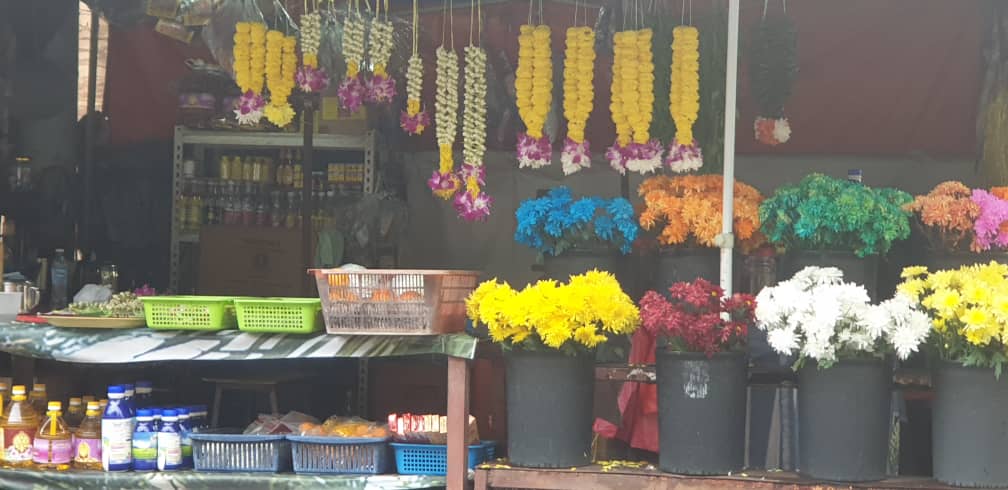
The Indian Dilemma Part 3
By Ganabatirau Veraman
A nation is never fully run by politicians as it is usually assumed. A country, regardless of which part of the world, is run by civil servants and the high-income group. Civil servants as we know, usually have a longer term in positions of power compared with politicians. On the other hand, owners of large private corporations have their influence in the trade world regardless of who is in power. Hence, up to a significant point, it can be assumed that the survival or prosperity of a society would also depend on how well they are represented in these two key segments. We need to ensure therefore fair representation of each community in these two areas to have access to benefit from the nation’s resources.
How does the Malaysian Indian community fare?
According to Onn (2023), Malays comprised 77.5 per cent of the civil service (excluding the police and military), with Sabah and Sarawak Bumiputeras accounting for 12.1 per cent, followed by Chinese (5.7 per cent), Indians (3.8 per cent) and Orang Asli (0.2 per cent) in 2022. What is ironic about this is that this clearly does not represent the demography of the Malaysian population.
In terms of income, the Chinese and Bumiputera ethnic groups are reported to enjoy higher average income than the Indian community. An average income of race groups directly indicates their involvement in entrepreneurship, private equity ownership, and high-paying jobs.
According to an article in The Edge Malaysia Weekly in 2020, bumiputera households made up 53.5% of the 1.72 million households in Malaysia that had more than RM10,000 in monthly gross income in 2019.
Citing the 2019 Household Income and Basic Amenities Survey (HIS) report by the Department of Statistics Malaysia (DoSM), it estimated that there were about 918,400 bumiputera households with a monthly gross income of at least RM10,000 in 2019, or 53.5% of all households with that level of income last year — trumping 656,200 Chinese households (38.2%), 144,000 Indian households (8.4%) and 8,300 households of other ethnicity (0.48%). It also noted that On the flip side, 932,600 or 71.6% of the 1.3 million households that earn less than RM3,000 a month last year were also bumiputeras. That compares with about 245,100 Chinese households (18.8% of total households earning below RM3,000 a month), 97,000 Indian households (7.4%).
It is visible that the Indians are more vulnerable in this area and hence more focus should be directed towards increasing their involvement and raising their average income and ensuring that they are not left behind in the country’s economic development.
The opportunities for the community to enhance their capabilities with the support of government entrepreneurship programmes should be expanded. By providing a sustainable entrepreneurship scheme to the Indian community, the MADANI government could help fuel the nation’s economic growth.
While there is already at least one entrepreneurship scheme under each ministry, the government needs to enhance the visibility of these schemes, enabling more to access these schemes.
In the year of 2017, the government launched the Malaysian Indian Blueprint (MIB), documenting the challenges that have been plaguing the Indian community. A total of four separate units looking into the community be consolidated and merged under a single unit called SEDIC.
SEDIC was then rebranded as Malaysian Indian Transformation Unit or MITRA in 2018, led by the Ministry of National Unity (KPN). A major task for MITRA was to identify current issues and challenges affecting the Indian community, implementing socio-economic development initiatives, and coordinating cooperation between the government and the private sector towards the development of the Indian community in general.
In the history of Malaysian politics, the MIB remains one of the most strategic plans to improve the Indian community’s economic and social stance. But the plan has not really taken off as well as it should or could have. Apart from a lapse in its implementation, the community’s own undoing with issues of poor leadership and mismanagement have continued to plague the successor MITRA from its onset.
Now, under the MADANI government, there is an urgent need for Prime Minister Dato’ Sri Anwar Ibrahim to flash the torch on these internal issues affecting MITRA’s performance and with the support of the Indian community help retain its original cause.
MITRA should be retained and brought back to its actual cause by turning it into a statutory body just like TERAJU for increased transparency and accountability.
But economy is only part of the issues facing the Indian community. The stigma of bearing association with gangsterism, alcoholism, and high crime rate for the community is another matter. This will be discussed in Part 4 of the Malaysian Indian Dilemma.

Ganabatirau Veraman is the Member of Parliament for Klang. In a series of articles, he speaks of his aspirations and hopes to see an overall upliftment for the Malaysian Indian community. He hopes that his advocacy for more action will bring greater support and deserving fair deals for the community.
The views expressed here are that of the writer’s and not necessarily Weekly Echo’s.